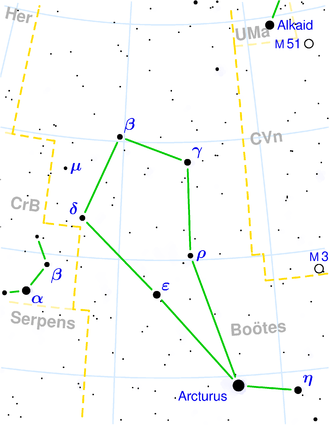NGC 5821
| Galaxy NGC 5821 |
|
|---|---|

|
|
| SDSS recording | |
| AladinLite | |
| Constellation | Bear keeper |
|
Position equinox : J2000.0 , epoch : J2000.0 |
|
| Right ascension | 14 h 58 m 59.6 s |
| declination | + 53 ° 55 ′ 24 ″ |
| Appearance | |
| Morphological type | S? |
| Brightness (visual) | 13.7 mag |
| Brightness (B-band) | 14.6 mag |
| Angular expansion | 1.4 ′ × 0.8 ′ |
| Position angle | 148 ° |
| Surface brightness | 13.7 mag / arcmin² |
| Physical data | |
| Affiliation | LGG 395 |
| Redshift | 0.011261 ± 0.000037 |
| Radial velocity | (3376 ± 11) km / s |
|
Stroke distance v rad / H 0 |
(157 ± 11) · 10 6 ly (48.2 ± 3.4) Mpc |
| history | |
| discovery | Wilhelm Herschel |
| Discovery date | April 24, 1789 |
| Catalog names | |
| NGC 5821 • UGC 9648 • PGC 53532 • CGCG 273-039, 274-005 • MCG + 09-25-002 • IRAS F14575 + 5407 • 2MASX J14585972 + 5355234 • GC 4030, 4028 • H III 811 • LDCE 1103 NED002 | |
NGC 5821 is a 13.7 mag bright galaxy of the Hubble-type S? in the constellation Bearkeeper . It is estimated to be 157 million light-years from the Milky Way and has a disk diameter of about 65,000 ly. It may interact with NGC 5820 .
The object was discovered on April 24, 1789 by Wilhelm Herschel with an 18.7-inch reflector telescope, who described it as "vF, S, E".
